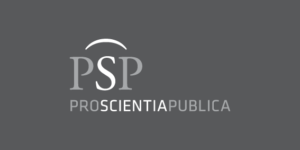The Importance of Selected Criteria for Assessing the Credibility of Information on the Internet from the Perspective of Users Searching Health and Disease Information Websites
DOI:
https://doi.org/10.15503/jecs2022.2.565.586Słowa kluczowe:
health literacy, information literacy, Internet, online health information, quality assessment criteriaAbstrakt
Aim. The aim of the survey was to find out how and why users of websites containing health information searched for information, how they feel about selected criteria for assessing the credibility of information, and what they are more likely to trust when they encounter a discrepancy between information from the website and from a doctor.
Methods. An online survey of users of 4 health information websites, two of which are listed as trusted sites on MedLike. The respondents assessed 10 criteria for determining the trustworthiness of online information and websites by assigning a number of stars (5 stars = important).
Results. The questionnaire was answered by 32,428 respondents (79.5% women, average age 47 years). The most frequently cited reasons for seeking information were their own health or illness (49%). Most respondents searched for information through an Internet search engine (66%). The importance of the criteria for selecting information did not differ significantly. The respondents gave the highest score (2.29) to the criterion of ease (I can easily find what I need). This was followed by consistency with information from the doctor (2.28).
Conclusion. The respondents searched for information in the way described in the literature as most common (using a search engine) and tended towards a heuristic evaluation of online information and its sources (ease of information retrieval) and also appreciated if the information found concurred with information from a healthcare professional.
Pobrania
Bibliografia
Beldad, A., de Jond, M., & Steehouder, M. (2010). How shall I trust the faceless and the intangible? A literature review on the antecedents of online trust. Computers in Human Behavior, 26, 857-869. https://doi.org/10.1016/j.chb.2010.03.013
Bernhardt, J. M., & Felter, E. M. (2004). Online pediatric information seeking among mothers of young children: results from a qualitative study using focus groups. Journal of Medical Internet Research, 6(1), e7. https://doi.org/10.2196/jmir.6.1.e7
Bliemel, M., & Hassanein, K. (2007). Consumer Satisfaction with Online Health Information Retrieval: A Model and Empirical Study. e-Service Journal, 5, 53-83. https://doi.org/10.2979/ESJ.2007.5.2.53
Brophy, J., & Bawden, D. (2005). Is Google enough? Comparison of an Internet search engine with academic library resources. Aslib Proceedings, 57, 498-512. https://doi.org/10.1108/00012530510634235
Czech Statistical Office. (2020, March 24). Informační společnost v číslech – 2020 [Information society in numbers - 2020]. Czech Statistical Office. https://www.czso.cz/csu/czso/informacni-spolecnost-v-cislech-2020
Costello, K. L. (2014). Proceedings of the American society for information science and technology. Asis&t, 51(1), 1-4. https://doi.org/10.1002/meet.2014.14505101105
Hargittai, E., Fullerton, L., Menchen-Trevino, E., & Thomas Yates K. (2010). Trust Online: Young Adults’ Evaluation of Web Content. International Journal of Communication, 4, 468-494. https://ijoc.org/index.php/ijoc/article/view/636
Choi, W. (2013). What Makes Online Health Information Credible for Older Adults? An Exploratory Study [Conference paper]. CHI 2013 Changing Perspectives, Paris, France. https://www.researchgate.net/publication/266653945_What_makes_online_health_information_credible_for_older_adults_an_exploratory_study
Cole, J. I., Lebo, H., & Dunahee, M. (2017). The World Internet Project – International report 7th edition. USC Annenberg School Center for the Digital Future, University of Southern California. https://www.digitalcenter.org/wp-content/uploads/2017/12/2016-World-Internet-Project-Report.pdf
Eysenbach, G., & Köhler, Ch. (2002). How do consumers search for and appraise health information on the world wide web? Qualitative study using focus groups, usability tests, and in-depth interviews. The British Medical Journal, 9(324), 573-577. https://doi.org/10.1136/bmj.324.7337.573
Eysenbach, G. (2007). Credibility of Health Information and Digital Media: New Perspectives and Implications for youth. In M. J. Metzger & A. J. Flanagin (Ed.). The John D. and Cathrine T. MacArthur Foundation Series on Digital Media and Learning. Cambridge, MA: The MIT Press (pp. 123-154). https://doi.org/10.1162/dmal.9780262562324.123
Gigerenzer, G., & Gaissmaier, W. (2011). Heuristic Decision Making. Annual Review of Psychology, 62(1), 451-482. https://doi.org/10.1146/annurev-psych-120709-145346
Haider, J., & Sundin, O. (2020). Information literacy challenges in digital culture: conflicting engagements of trust and doubt. Information, Communication and Society, 25(8), 1176-1191. https://doi.org/10.1080/1369118X.2020.1851389
Hong, T. (2006). The influence of structural and message features on Web site credibility. Journal of the American Society for Information Science and Technology, 57(1), 114-127. https://doi.org/10.1002/asi.20258
Jonák, Z. (2004). Jak rozpoznat věrohodnost, relevanci, spolehlivost informací a informačních pramenů [How to recognize the credibility, relevance, reliability of information, and information sources]. Cyklus Uplatňování kritického myšlení. Metodický portál RVP.CZ. https://clanky.rvp.cz/clanek/o/z/120/JAK-ROZPOZNAT-VEROHODNOST-RELEVANCI-SPOLEHLIVOST-INFORMACI-A-INFORMACNICH-PRAMENU.html
Kim, Y. (2016). Trust in health information websites: A systematic literature review on the antecedents of trust. Health Informatics Journal, 22(2), 355-369. https://doi.org/10.1177/1460458214559432
Kučera, Z., Pelikan, J., & Šteflová, A. (2016). Zdravotní gramotnost obyvatel ČR – výsledky komparativního reprezentativního šetření [Health literacy of the population of the Czech Republic - results of a comparative representative survey]. Časopis lékařů českých, 155, 233-241. https://www.prolekare.cz/casopisy/casopis-lekaru-ceskych/2016-5/zdravotni-gramotnost-obyvatel-cr-vysledky-komparativniho-reprezentativniho-setreni-59024
Lesenková, E. (2016). Podpora zdravotní gramotnosti a knihovny [Health literacy and library support]. Lékařská knihovna, 21, 3-4. https://casopis.nlk.cz/archiv/2016-21-3-4/podpora-zdravotni-gramotnosti-a-knihovny/
Liao, V. Q., & Fu, W. (2014). Age Differences in Credibility Judgment of Online Health Information. ACM Transactions on Computer-Human Interaction, 21(1), 1-23. https://doi.org/10.1145/2534410.
Macháčková, H., & Smahel, D. (2018). The perceived importance of credibility cues for the assessment of the trustworthiness of online information by visitors of health-related websites: The role of individual factors. Telematics and Informatics, 35(5), 1534-1541. https://doi.org/10.1016/j.tele.2018.03.021
Mager, A. (2009). Mediated health: sociotechnical practices of providing and using online health information. New Media and Society, 11(7), 1123-1142. https://doi.org/10.1177/1461444809341700
Materska, K. (2014). Information Heuristics of Information Literate People. In Kurbanoaeglu, S., Spiranec, S., Grassian, E., Mizrachi, D., & Catts, R. Information Literacy. Lifelong Learning and Digital Citizenship in the 21st Century. ECIL 2014 Croatia. Springer International Publishing. http://eprints.rclis.org/23919/1/Materska-eLIS.pdf
Meric, F., Bernstam, E. V., Mirza, N. Q., Hunt, K. K., Ames, F. C., Ross, M. I., Kuerer, H. M., Pollock, R. E., Musen, M. A., & Singletary, E. S. (2002). Breast cancer on the world wide web: cross sectional survey of quality of information and popularity of websites. The British Medical Journal, 9(324), 557-581. https://doi.org/10.1136/bmj.324.7337.577
Metzger, M. J., Flanagin, A. J., & Zwarun, L. (2003). College student Web use, perceptions of information credibility, and verification behavior. Computers and Education, 41(3), 271-290 https://doi.org/10.1016/S0360-1315(03)00049-6
Metzger, M. J. (2007). Making sense of credibility on the Web: Models for evaluating online information and recommendations for future research. Journal of the American Society for Information Science and Technology, 58(13), 2078-2091. https://doi.org/10.1002/asi.20672
Národní Lékařská Knihovna. (n.d.). Co je MedLike? [What is MedLike?]. https://nlk.cz/zdroje/medlike/
Pleskot, O., & Rusová, J. (2018). Internet – The threat or hope of Czech health literacy? Kontakt, 20(4), 458-465. https://doi.org/10.1016/j.kontakt.2018.10.001
Rains, S. A., & Donnerstein Karmikel, C. (2009). Health information-seeking and perceptions of website credibility: Examining Web-use orientation, message characteristics, and structural features of websites. Computers in Human Behavior, 25(2), 544-553. https://doi.org/.1016/j.chb.2008.11.005
Rowlands, G., Shaw, A., Jaswal, S., Smith, S., & Harpham, T. (2017). Health literacy and the social determinants of health: A qualitatiove model from adult learners. Health Promotion International, 32(1), 130-138. https://doi.org/10.1093/heapro/dav093
Rusová, J., & Pleskot, O. (2020). Quality of health information on websites with the greatest potential to influence users in the Czech Republic. Journal of Education Culture and Society, 11(1), 281-299. https://doi.org/10.15503/jecs2020.1.281.299
Shah, A. A., Ravana, S. D., Hamid, S., & Ismail, M. A. (2015). Web credibility assessment: affecting factors and assessment techniques. Information Research, 20(1). http://informationr.net/ir/20-1/paper663.html#.YgP7PurMJPY
Scholz-Crane, A. (1998). Evaluating the Future: A Preliminary Study of the Process of How Undergraduate Students Evaluate Web Sources. Reference Services Review, 26(3/4), 53-60. https://doi.org/10.1108/00907329810307759
Sillence, E., Briggs, P., Fishwick, L., & Harris, P. (2006). A framework for understanding trust factors in web-based health advice. International Journal of Human-Computer Studies, 64(8), 697-713. https://doi.org/10.1016/j.ijhcs.2006.02.007
Sillence, E., Briggs, P., Fishwick, L., & Harris, P. (2007). Health Websites that people can trust – the case of hypertension. Interacting with Computers, 19(1), 32-42. https://doi.org/.1016/j.intcom.2006.07.009
Sillence, E., Briggs, P., Harris, P., & Fishwick, L. (2007). How do patients evaluate and make use of online health information? Social Science & Medicine. 64(9)1853-62. https://doi.org/10.1016/j.socscimed.2007.01.012
Survio. (2013). Online dotazníky - výhody a nevýhody [Online questionnaires - advantages and disadvantages]. Survio. https://www.survio.com/cs/blog/serialy/online-dotazniky-1-vyhody-a-nevyhody-2
van Zyl, A., Turpin, M., Matthee, M. (2020). How Can Critical Thinking Be Used to Assess the Credibility of Online Information? In M. Hattingh, M. Matthee, H. Smuts, I. Pappas, Y. K. Dwivedi, M. Mäntymäki (Eds.), Responsible Design, Implementation and Use of Information and Communication Technology. I3E 2020. Lecture Notes in Computer Science (pp. 199-210), vol 12067. Springer, Cham.: https://doi.org/10.1007/978-3-030-45002-1_17
Westerwick, A. (2013). Effects of Sponsorship, Web Site Design, and Google Ranking on the Credibility of Online Information. Journal of Computer-Mediated Communication, 18, 194-211. https://doi.org/10.1111/jcc4.12006
World Health Organization. (n.d.). Health literacy. https://gateway.euro.who.int/en/themes/health-literacy/
Zhang, Y., Sun, Y., & Xie, B. (2015). Quality of Health Information for Consumers on the Web: A Systematic Review of Indicators, Criteria, Tools, and Evaluation Results. Journal of the Association for Information Science and Technology, 66(10), 2071-84. https://doi.org/10.1002/asi.23311
Pobrania
Opublikowane
Numer
Dział
Licencja
Prawa autorskie (c) 2022 Jitka Rusová, Adéla Michková, Ondřej Pleskot, Ondřej Podeszwa, Eva Hlaváčková

Utwór dostępny jest na licencji Creative Commons Uznanie autorstwa 4.0 Międzynarodowe.
CC-BY
Authors retain copyright and grant the journal right of first publication with the work simultaneously licensed under a Creative Commons Attribution License that allows others to share the work with an acknowledgement of the work's authorship and initial publication in this journal. All authors agree for publishing their email adresses, affiliations and short bio statements with their articles during the submission process.


